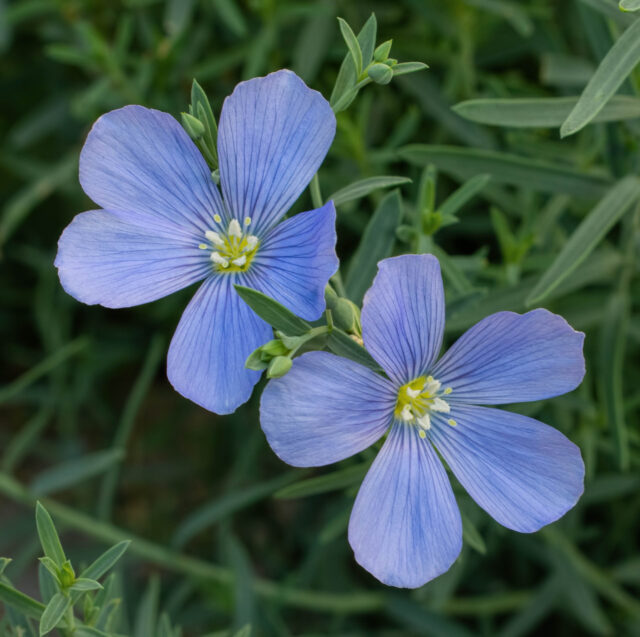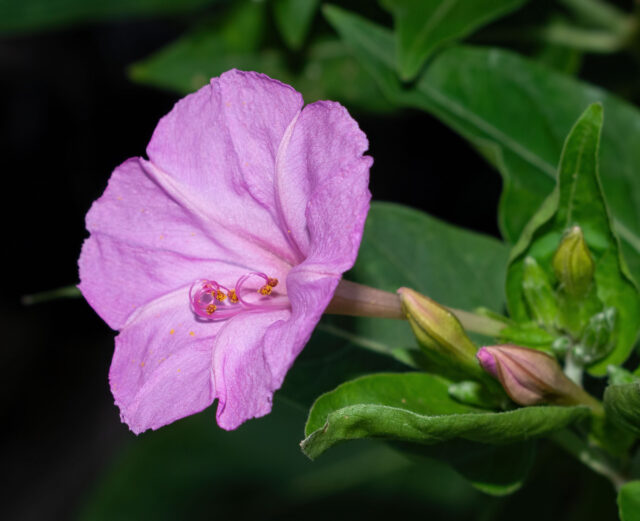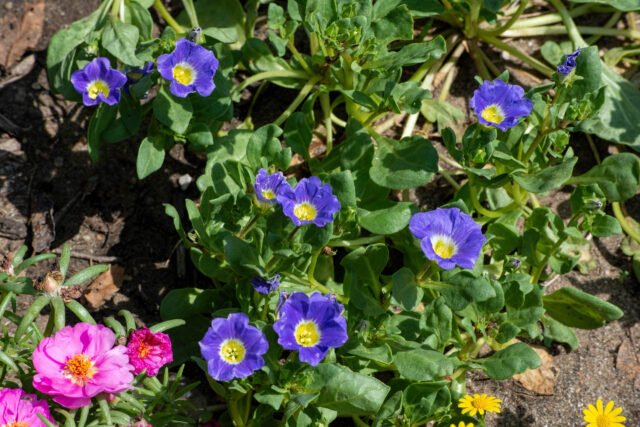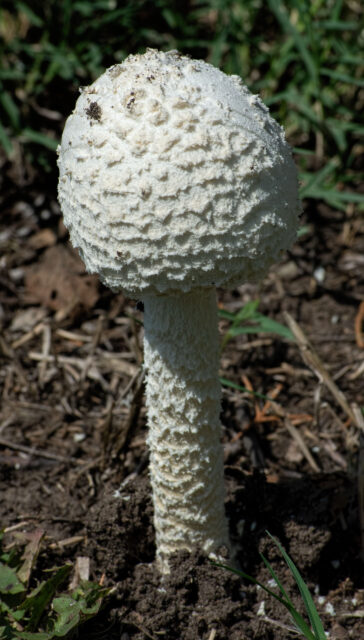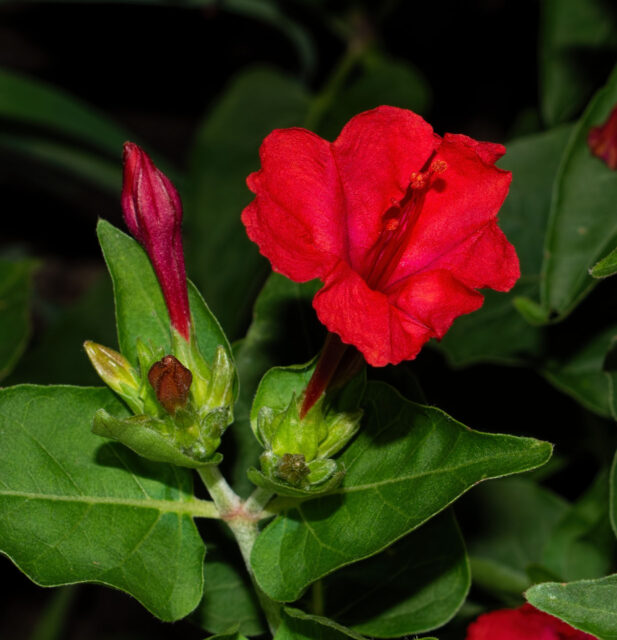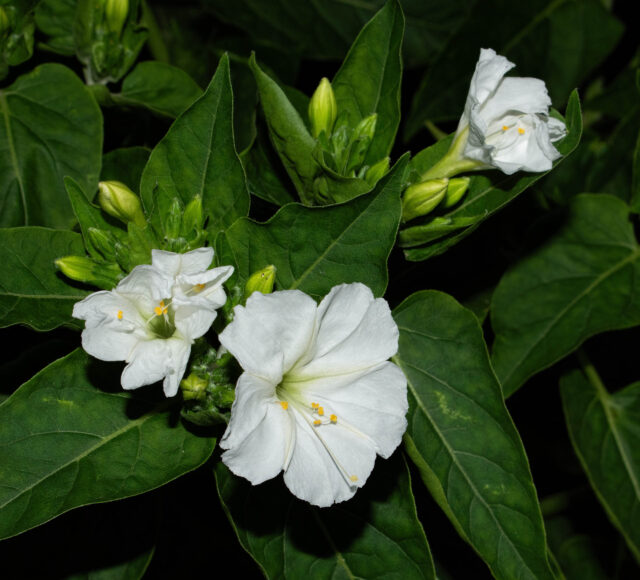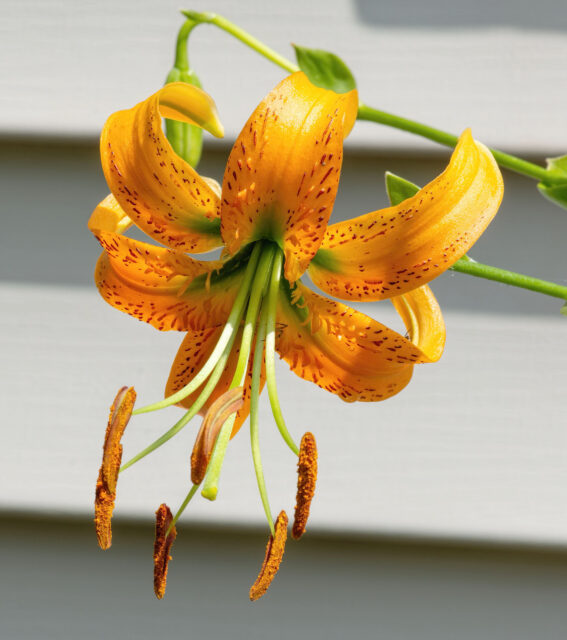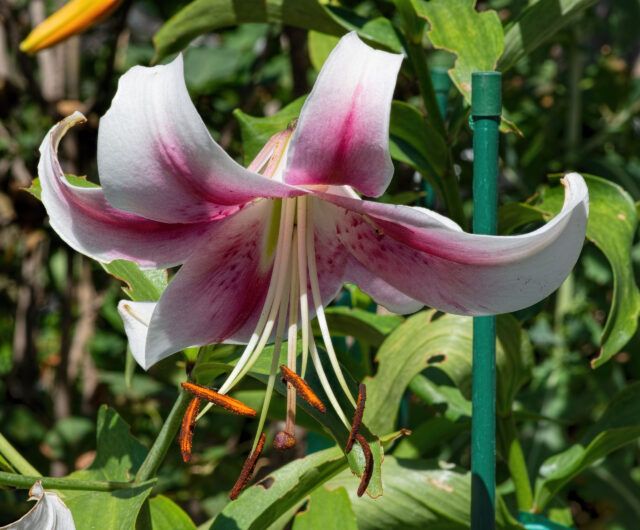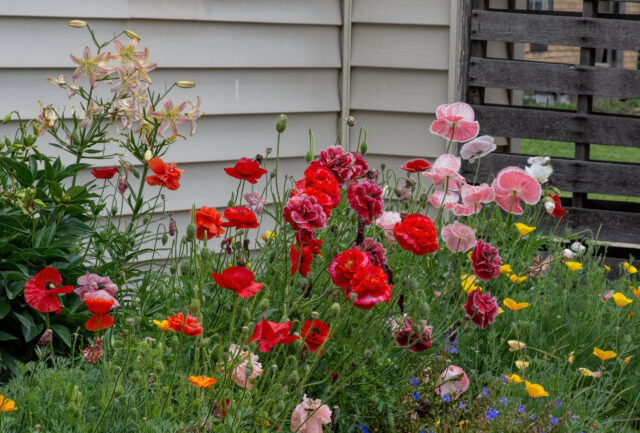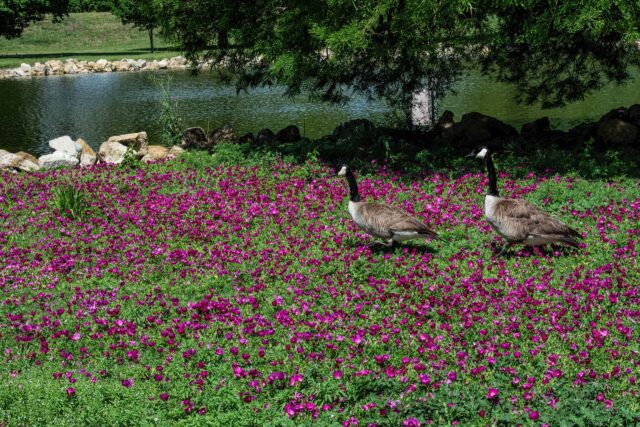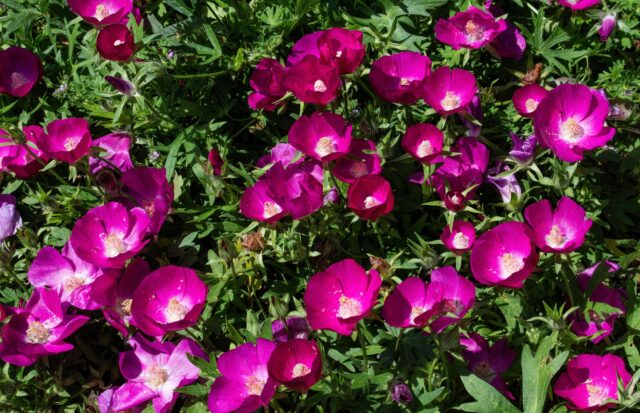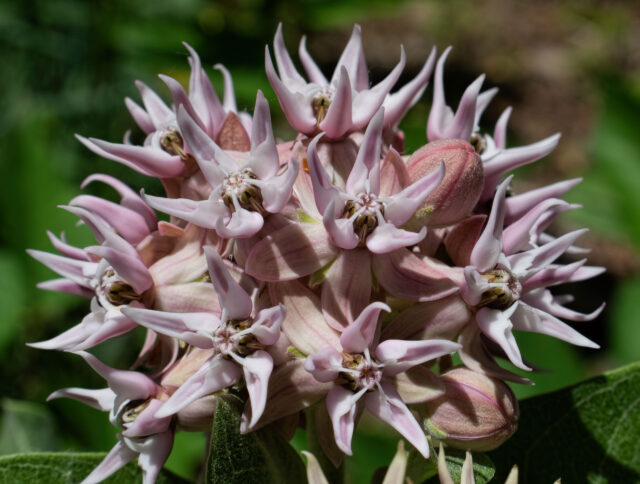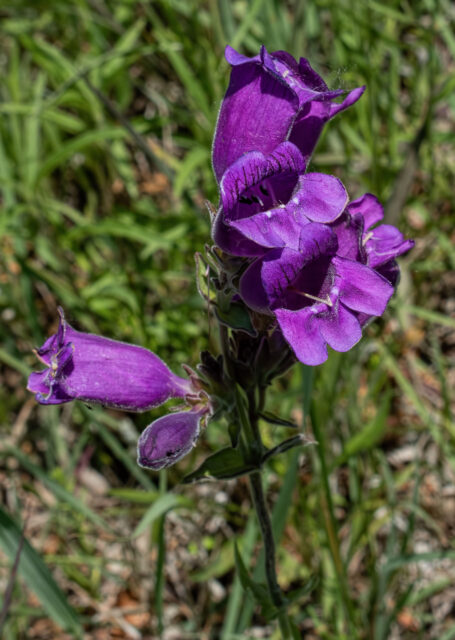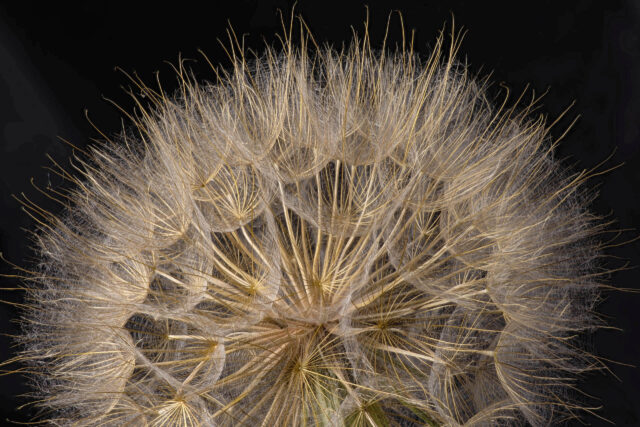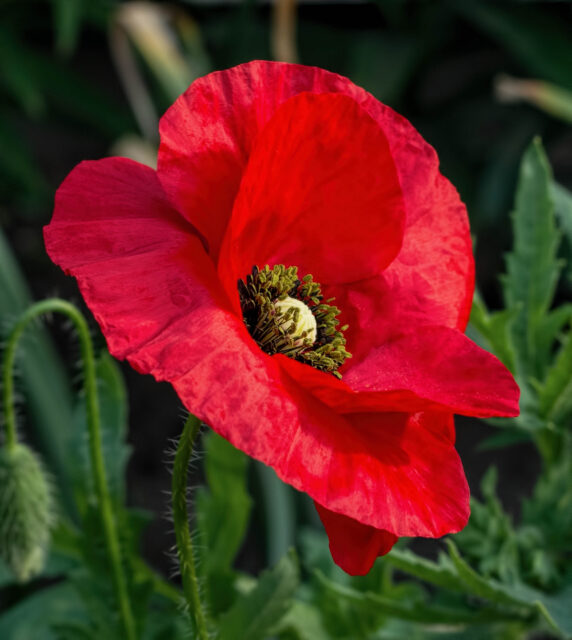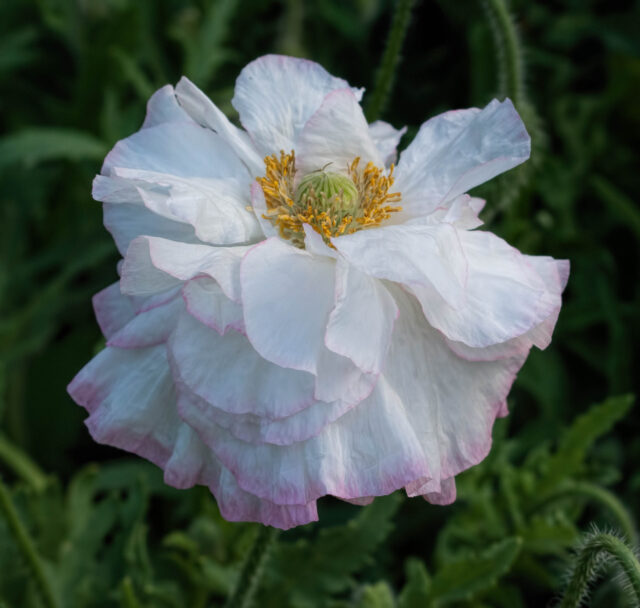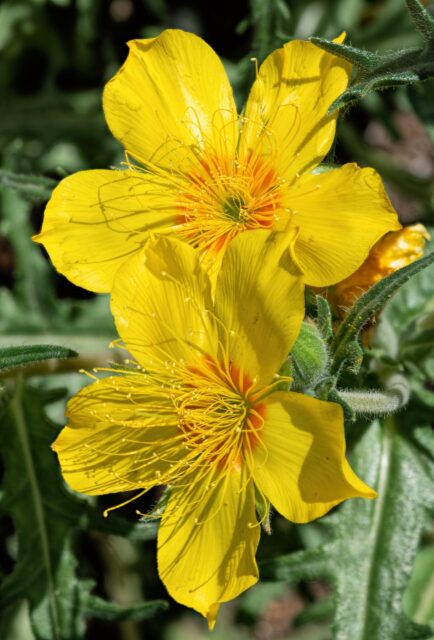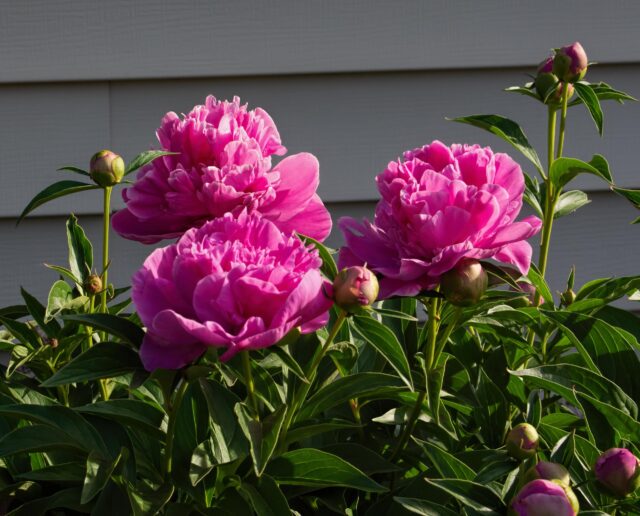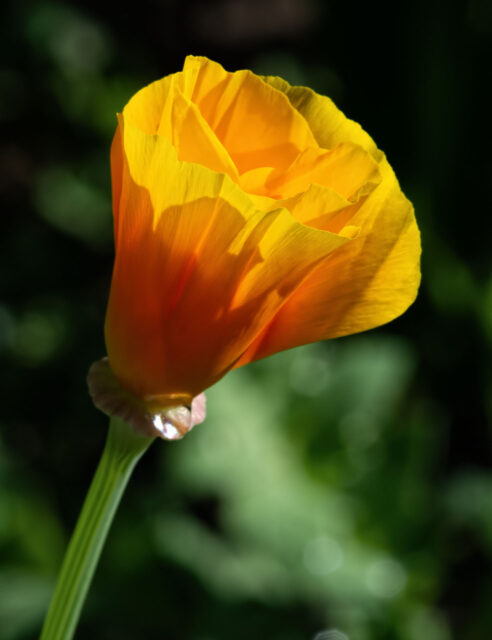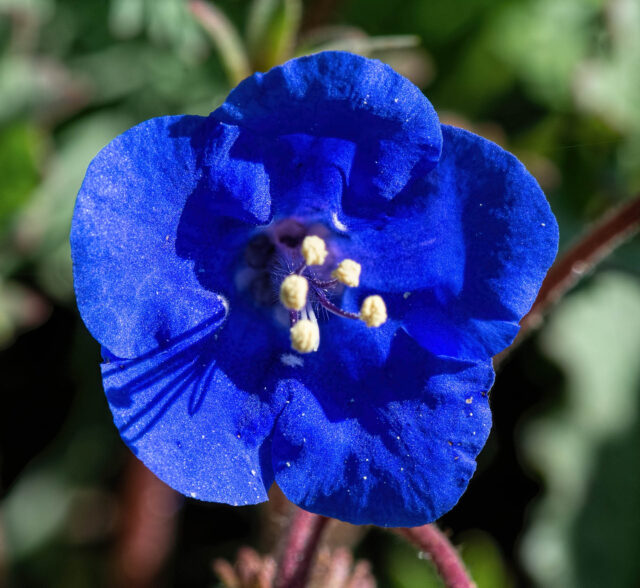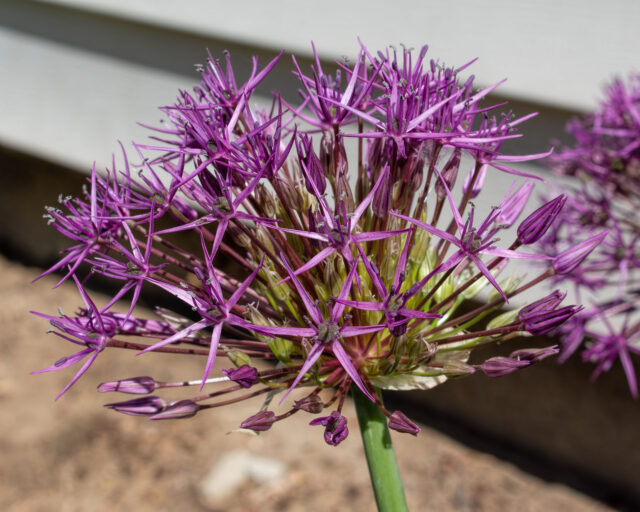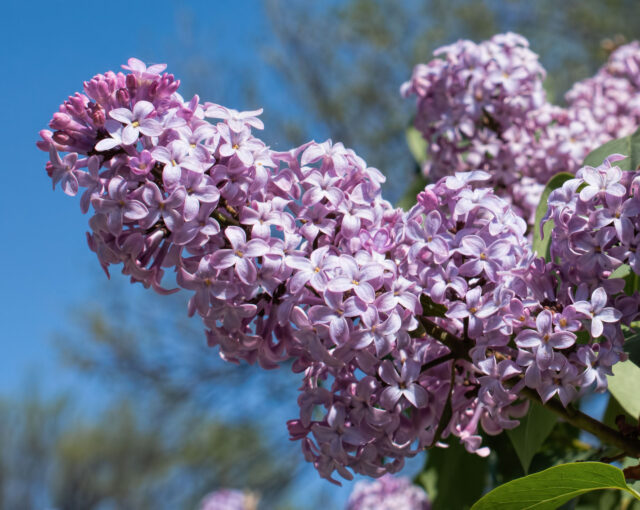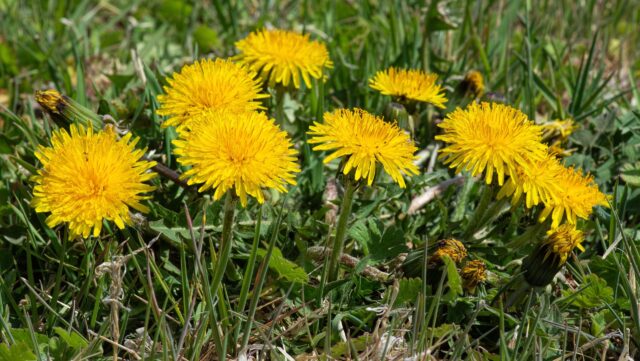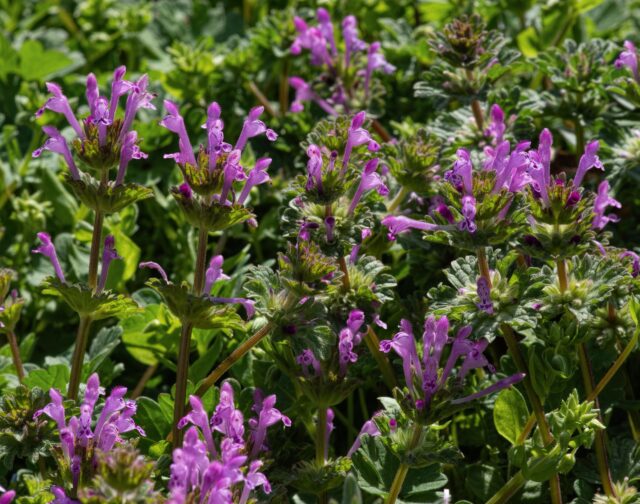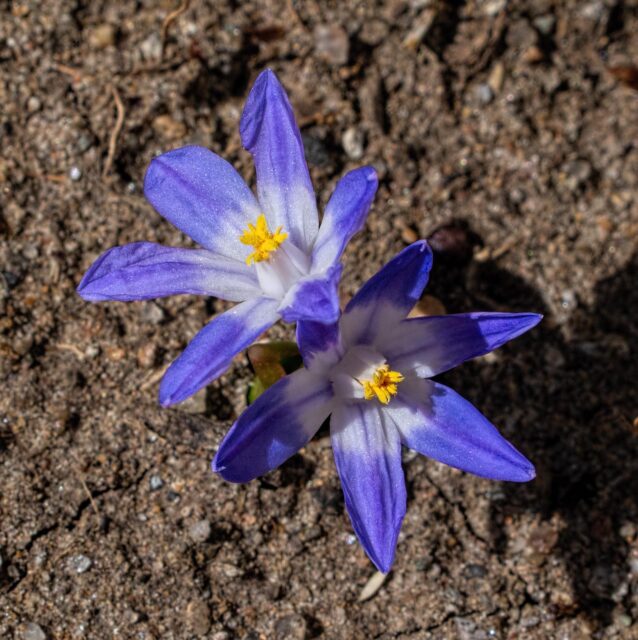I started some Linum perenne this spring. It’s a perennial, and I didn’t expect much from it this year. However, the seedlings grew strongly and have been blooming spasmodically all summer. The individual flowers are small, but during the main flush of bloom in early summer established plants are solid blue mounds. (I had a fine specimen years ago that in flower was a blue hemisphere with a radius of about fifteen inches. Then the family cat decided that it was a nice spot to nap.)
Category: Botany
Think pink
In lieu of actual content here are snapshots of four o-clocks and dianthus from my yard.
Recent snapshots
Five hours late
Hank and Annie
Two more lilies are blooming in my garden, Lilium henryi, above, and “Anastasia.” L. henryi is a Chinese species that is supposed to be indestructible. Mine is four feet tall this year, but it can get over six feet when established. The stem is thin and willowy, so if you live in a windy place like Kansas, it needs to be staked. Anastasia is an “orienpet,” a hybrid of oriental and trumpet species. The flower is large, over seven inches across. The plant is supposed to get up to six feet tall, but mine is barely three feet, making photography a bit awkward. I expect it will grow taller in coming years.
Coming soon: Sherri.
More pictures
It’s prime time in the garden, so here’s another batch of snapshots.
Sunday in the park with mosquitoes …
… and geese.
I took my camera out to the park today and found a little color. The most vivid was the “purple poppy mallow,” Callirhoe involucrata, which is not a poppy but is an intense magenta.
Milk and beards
We had a few mild days with little wind between storms this week, so I made a trip out to the nature center to see what was happening there. The answer is, not much. It demonstrated once again that, of all the fifty states, Kansas likely has the lowest ratio of native plant species to total area. According to my guidebooks, what few interesting plants there are that grow in the state are concentrated in the eastern corners. Out here in the middle of flatland, there is very little to catch the eye. The milkweed and penstemon were the standouts.
The beard of a goat
The incessant fierce winds paused for a couple of days, and I was able to rescue a Tragopogon dubius seed head before it was blasted apart by the current round of storms.
Popping
More yellow
One of this year’s experiments started blooming this week. Mentzelia lindleyi is a hardy annual from California that I seeded outside in early March, along with poppies and Phacelia1. The flowers are about two inches in diameter. They’re supposed to open in the evening and close in the morning, but these have done the opposite — not that I’m complaining. The plants are about a foot tall and probably will grow taller, though I doubt that they’ll reach the three feet that some sources claim. The leaves are long, thin and deeply lobed; they look skeletal, and the plant overall is scrawny. Should you grow it in your garden, I suggest giving it leafier companions.
Mentzelia is a genus of the Loasaceae, a family known for fine flowers and stinging hairs.2 Mentzelias don’t bite, but they do have barbed hairs that can cling to fabric and fur. The stems and leaves feel like sandpaper.
Mentzelia lindleyi is supposed to be heat- and drought-tolerant and bloom for two months3. Summer is nearly here. We’ll see how it does in Kansas.
And yet another gardening post
There is no botanical garden where I now live. If I want to photograph interesting and unusual plants, I’ll have to grow them myself — which I am doing. It takes time to get them established, though. Until them, I must content myself with pictures of more familiar plants, such as these.
Four months in four days
Thursday it was March outdoors, chilly, windy and wet. Yesterday it was a much milder April. Today it’s May, warm and breezy. Tomorrow, if the weatherman is right, will be a hot June day.
Despite the meteorological shenanigans, the plants in my garden continue to thrive. The first California poppy opened today. Phacelia campanularia, probably the most intensely blue flower one can easily grow in Kansas, has been blooming for a week now. There’s much more coming soon.
The purple onion
The Allium christophii I found at Walmart last October are now blooming. The flower heads are supposed to get eight inches in diameter, but these look like they’ll max out at about five. They’ll be followed shortly by another variety of allium, and then peonies and an early lily. The phacelia, poppies and other annuals will start blooming shortly.
My lilac — something I haven’t been able to say since I was fourteen — put on a fine, fragrant show despite years of neglect.
When I lived in Wichita, I didn’t have a proper yard. There was a plot about the size of two postage stamps out front where I could grow a few things, plus a strip maybe eight inches wide along one side of the house. Now I have a quarter-acre lot. Mowing that much grass every week is tedious, but it’s worth it for the buffer zone between me and my neighbors (who are actually mostly nice people). The main garden south of the house alone gives me about four times as much room to work with as I had in Wichita. I’ve also established three small beds on the north and west sides. This year I’m relying on annuals for color, but over time the perennials I’m putting in will establish themselves and take over. In a few years, the gardens will need little maintenance beyond weeding, watering and occasional fertilizing.
Gardening notes
Dandelions put on a terrific show, with abundant vivid yellow flowers on compact plants. If they were temperamental and difficult to cultivate, they’d be among the most impressive plants in a garden. However, they’re all too easy to grow, and I will shortly need to start mowing them and the henbit in the yard.

